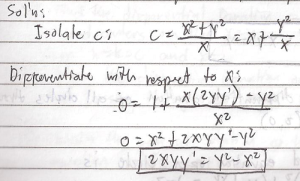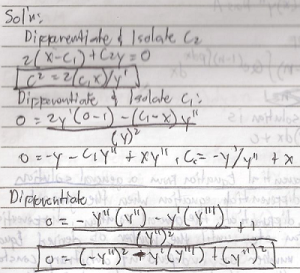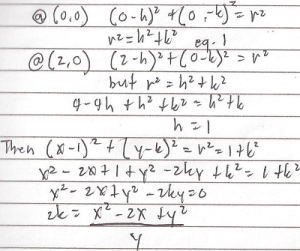Classification of Differential Equation and Examples
1. Ordinary differential equation in which all derivatives are ordinary derivatives of one or more dependent variable with respect to a single independent variable.
2. A partial differential equation is a differential equation containing at least one partial derivative of some dependent variable.
3. The Order of a Differential Equation is the order of the neglect order derivative which appears in the equation.
4. A Differential Equation is linear in a set of one or more of its dependent variables if and only if each learn of the equation which contains a variable of the set or any of their duration is of the first degree in those variable and their derivative.
5. A Differential Equation which is not linear in some dependent variable is said to be nonlinear in that variables. A differential Equation which is not linear in the set of all its dependent variable is simply said to be nonlinear.
Example 1
The Equation ![]() is a linear differential equation of second order the presence of product xy and the term Cos X does not alter this fact that the equation is linear because by definition linearity is determined so Let y by the way the dependent variable y. and its derivatives enter into combination away themselves within each term of the equation.
is a linear differential equation of second order the presence of product xy and the term Cos X does not alter this fact that the equation is linear because by definition linearity is determined so Let y by the way the dependent variable y. and its derivatives enter into combination away themselves within each term of the equation.
Example 2
The Equation ![]() is a nonlinear equation becomes of the occurrence of the product of y and one of derivatives.
is a nonlinear equation becomes of the occurrence of the product of y and one of derivatives.
Example 3
The Equation ![]() is linear in the dependent variable V but nonlinear in the dependent variable a because Sin U is a nonlinear function of U. The equation is also nonlinear
is linear in the dependent variable V but nonlinear in the dependent variable a because Sin U is a nonlinear function of U. The equation is also nonlinear
Example 4
The Equation ![]() is linear in each dependent variable x and y. However because of the term xy is not linear in the set of dependent variable (x, y) or consequence the equation is also nonlinear.
is linear in each dependent variable x and y. However because of the term xy is not linear in the set of dependent variable (x, y) or consequence the equation is also nonlinear.
Example 5
The equation 3x^2 dx + (Sin x) y = 0 is neither linear or nonlinear division by dx transform it into the equation 3x^2 + (Sin x) y = 0 which is linear in y but division by dy gives 3x^2 dx/dy + Sin x = 0







